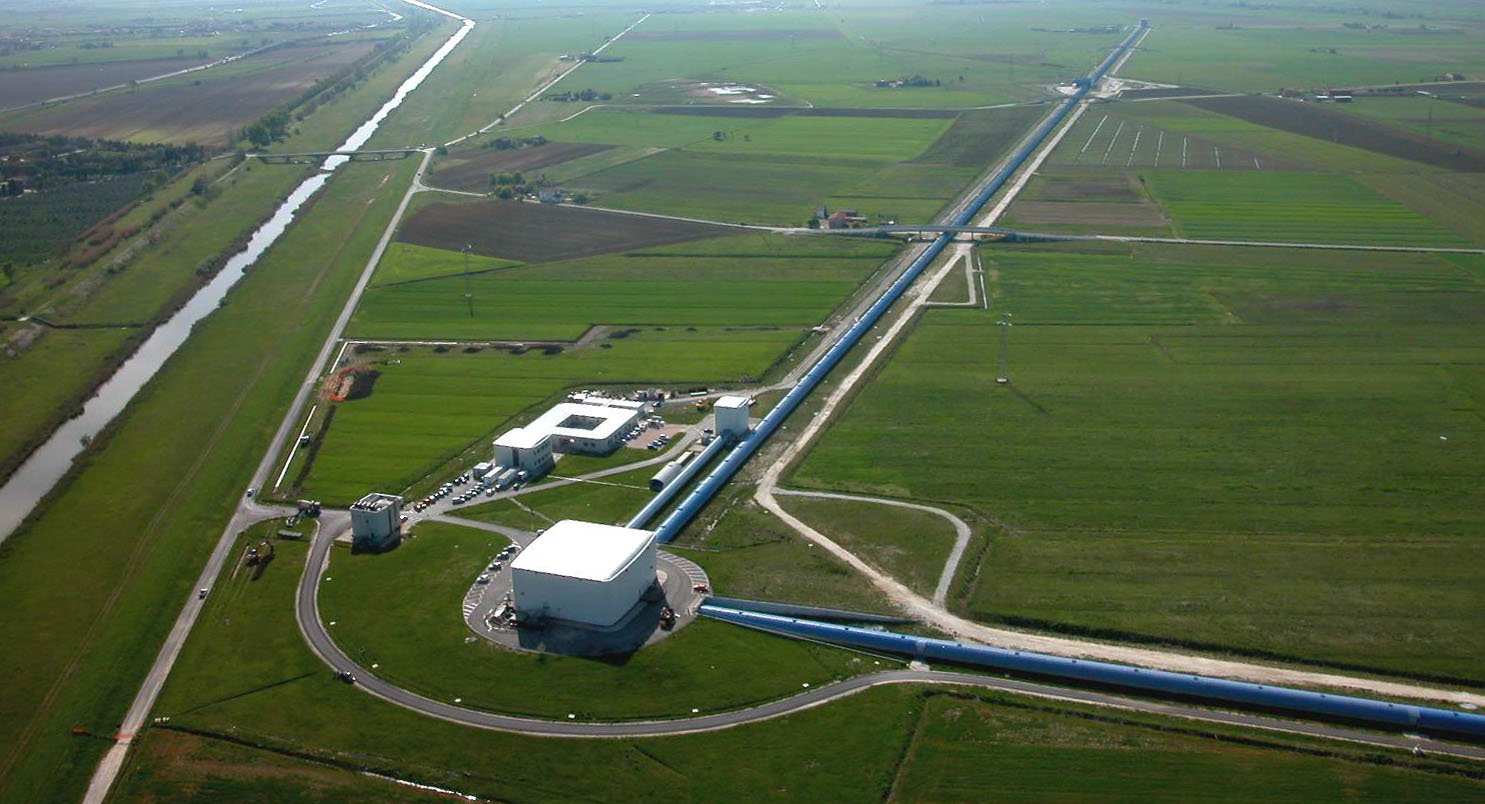LIGO and Virgo Observatories Record Another Gravitational Wave

Franco-Italian detector Virgo, aerial view of the central building, three-kilometer western shoulder and the beginning of the northern shoulder (when space-time is compressed, the length of the shoulders changes: one becomes longer and the other shorter). Other buildings are offices, workshops, computer rooms and an interferometer control room. Photo: The Virgo collaboration / CCO 1.0
In August, three detectors on two continents recorded a gravitational wave signal - the oscillations of space-time tissue - from a pair of black holes during the merger. The event was observed in the area of GW170814, it was announced on September 27, 2017 by the LIGO conglomeration ( press release of LIGO , press release of the National Science Foundation , scientific article on the event) The black hole merger was registered on August 14, 2017 at 10:30:43 UTC.
This is the fourth gravitational wave recorded by the LIGO observatories, but the first case when gravitational waves were detected by three different detectors at once, including the European Virgo. The work shows the result of improved localization of space events through a global system of gravitational waves observatories integrated into a single network. The discovery was attended by two LIGO conglomeration detectors in Louisiana and Washington (USA), as well as a Virgo detector located near Pisa (Italy). He first participated in the detection of gravitational waves.
“Less than a year ago, the US National Science Foundation announced that the Laser Interferometric Gravitational Wave Observatory (LIGO) was the first in the world to detect gravitational waves resulting from the merger of two black holes in a galaxy in a billion light-years,” said director of the National Science Foundation France Cordoba (France Córdova). - Today we are pleased to announce the first discovery made in partnership between the Virgo gravitational-wave observatory and the LIGO scientific collaboration, the first case when gravitational waves were observed by these observatories located thousands of kilometers from each other. This is a remarkable milestone in the growing international scientific effort to uncover the extraordinary secrets of our universe. ”
In addition to the first case of such cooperation, registration by three detectors completely dispelled skeptics' doubts that gravity is transmitted by waves, and space-time can be compressed: “Registration of gravitational waves by the Virgo detector, located on another continent and significantly different in design from two almost identical LIGO detectors , allows you to completely forget about the already extremely unlikely possibility that the previous events were caused by some earthly reasons ", - said Farid Khalili, professor Financials Skog of the Faculty.

The event in the region of GW170814 was recorded at the last stage of the merger of two black holes with masses of 31 and 25 solar masses at a distance of about 1.8 billion light years from the solar system. As a result of the merger, a rotating black hole with a mass of about 53 solar masses was formed, that is, three solar masses were converted into energy of gravitational waves.
The Virgo detector was recently updated to the second generation, it went into operation on August 1, 2017. Scientists were lucky to register gravitational waves two weeks after the start of work. At the same time, the same wave was recorded by LIGO detectors.
The launch of Virgo after a six-year upgrade is a very important event. The fact is that when an event is recorded immediately by three detectors, it is possible to more accurately localize its coordinates and distance. In particular, the star region of GW170814 has an area of only 60 square degrees (1 steradian is 3282.806 sq. Degrees, and the full angle is 41252.96125 sq. Degrees). This is more than ten times less than could be determined using only two LIGO interferometers. In our case, the place of the event is located in a small area in the constellation of the Clock in the night sky of the southern hemisphere of the Earth.
Such a precise determination of coordinates is important because many fusions of compact objects - for example, fusions of neutron stars - usually lead to the emission of broadband electromagnetic radiation in addition to gravitational waves. That is, other instruments can register it, and not just a laser-interferometric gravitational-wave observatory.
Immediately after registering the anomaly, 25 observatories around the world aimed at the GW170814 region, but no additional radiation was observed, as should be the case with black holes.
Scientists note that during the next LIGO launch in the fall of 2018, they hope to detect gravitational waves more often: maybe every week or more often. Well then, we will know for sure when the fabric of the space-time in which we are oscillates.
The scientific article on event GW170814 was accepted for publication in the journal Physical Review Letters .
